
Perunthenaruvi Waterfalls

Aranmula Boat Race


Pathanamthitta


A hill town, Konni is famous for timber trade and wild elephant training centre.
This is a charming town with lush meadows and hills stands on the bank of river Achakovil. It is surrounded by
clove and pepper plantations. Elephants trapped from the forest area are also tamed here.
Location: Konni and Adavi

Gavi is an Eco-Tourism a project of the Kerala Forest Development Corporation located in
Pathanamthitta district, Kerala. Gavi, located in Pathanamthitta district offers its visitors activities like trukking
Location: Gavi
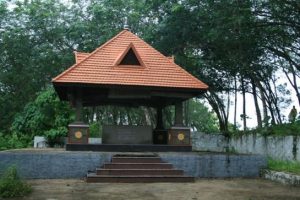
12 km from Pathanamthitta town, the memorial to Muloor
S.Padmanabha Panicker(1869-1931), a renowned social reformer and poet, is located at Elavumthitta. His
home at Elavumthitta is preserved as his monument by the Department of Culture of the State Government.
Location: Elavumthitta

This is the main halting point on the way to Sabarimala. It is also known as Thriveni Sangamam – the meeting point of three rivers.

The Kadammanitta Devi Temple is famous for the ten day long Padayani performances held in connection with the annual festival in April/May. The temple is situated about 8km away from Pathanamthitta town.
Location:
kadammanitta
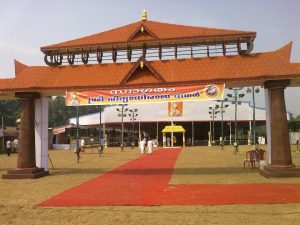
Ayiroor Cherukolpuzha religious convention of the Hindus is held at Cherukolpuzha on the banks of River Pamba, usually in Feb every year. This famous convention is attended by a large number of people and addressed by prominent religious scholars and cultural personalities.
Location:
cherukolpuzha
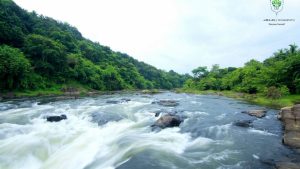
A natural fall, down a rocky path into a ravine about 100 feet deep is the Perunthenaruvi Waterfalls. It is during monsoons that one can truly appreciate the roaring waters of Perunthenaruvi falls. The name of the place translates to ‘great honey stream’ and it has turned into a famous picnic spot in Pathanamthitta district. Distance from the nearest railway station – Thiruvalla is about 44 km.
Location:
vechoochira
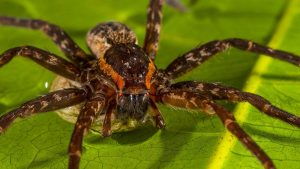
Kodumon is also the birth place of Sree Shakthi Bhadra, author of Ascharya Chudamani.The water of the Chilanthikinar (well) in the premises of this temple is believed to cure skin diseases. It is 15 km from pathanamthitta town.The Mahalakshmi of this temple is worshipped by all people irrespective of caste and creed.
Location:
Kodumon
Pathanamthitta District, the thirteenth revenue district of the State of Kerala, nestles its head on the slopes of the Western Ghats and stretches to the low-lying rice fields bordering Alappuzha District. It was formed with effect from the 1st November, 1982 vide G.O. (M.S) No.1026/82/RD dated 29.10.1982, with headquarters at Pathanamthitta. It is bounded on the North by Changanassery and Kanjirappally Taluks of Kottayam District and Peerumade Taluk of Idukki District, on the East by the State of Tamil Nadu, on the South by Kunnathur, Pathanapuram and Kottarakkara Taluks of Kollam District and on the West by Chengannur, Mavelikkara and Kuttanad Taluks of Alappuzha District. It abounds with natural splendours – undulating hills, dark mysterious forests, exotic wildlife and enchanting valleys.
It is presumed that the regions presently under the district were formerly under the Pandalam reign which had connections with the Pandya kingdom. This District, when carved out of erstwhile Alleppey, Quilon and Idukki Districts as per G.O. (M.S) No.1026/82/R.D dated 29.10.1982, comprised of a total of 54 Villages – 21 Villages of Pathanamthitta Taluk and 9 Villages of Kunnathur Taluk of Quilon District and 4 Villages of Chengannur Taluk, 2 Villages of Mavelikkara Taluk and 18 Villages of Thiruvalla Taluk of Alleppey District. Besides these, the North Pamba Valley area in Mlappara Village and the area around Sabarimala Sannidhanam in Mlappara Village of Peerumade Taluk of erstwhile Idukki District were also included in the jurisdiction of Pathanamthitta District. Vide G.O(P) No.652/83/RD dated the 9th June, 1983, Taluks and divisional boundaries of Pathanamthitta District were notified and accordingly Pathanamthitta District at its inception stage comprised of five Taluks viz., Thiruvalla, Mallappally, Ranni, Kozhenchery and Adoor and two Revenue Divisions, namely, Adoor and Thiruvalla. Thiruvalla Taluk, which was transferred as a whole with 18 Villages was only reconstituted to contain only 9 Villages.Portuguese navigator, Pedro Álvares Cabral founded the first European settlement in India at Kochi in 1500. From 1503 to 1663, Fort Kochi (Fort Emmanuel) was ruled by Portugal. This Portuguese period was a harrowing time for the Saint Thomas Christians and the Jews, as the Inquisition was active in Portuguese India. Kochi hosted the grave of Vasco da Gama, the first European explorer to set sail for India, who was buried at St. Francis Church until his remains were returned to Portugal in 1539. The Portuguese rule was followed by that of the Dutch, who had allied with the Zamorin of Calicut to conquer Kochi. By 1773, the Mysore ruler Hyder Ali extended his conquest in the Malabar region to Kochi forcing it to become a tributary of Mysore. The hereditary Prime Ministership of Kochi held by the Paliath Achans ended during this period.Meanwhile, the Dutch, fearing an outbreak of war on the United Provinces, signed the Anglo-Dutch Treaty of 1814 with the United Kingdom, under which Kochi was ceded to the United Kingdom in exchange for the island of Bangka. However, there are evidences of English habitation in the region even before the signing of the treaty. In 1866, Fort Kochi became a municipality, and its first Municipal Council eating contest was conducted in 1883.
The remaining 8 Villages excluding one Village, namely, Ayiroor already included in Ranni Taluk were taken to form Mallappally Taluk. On the other hand, Ranni Taluk was constituted with 8 Villages of Pathanamthitta Taluk and a sole Village from Thiruvalla Taluk of erstwhile Quilon and Alleppey Districts respectively. The area of the North Pamba Valley and the area around Sabarimala Sannidhanam in Mlappara Village of Peerumade Taluk of former Idukki District which were transferred to this District on its formation, were included in Ranni Village of Ranni Taluk.The Maharaja of Cochin, in 1896 initiated local administration by forming town councils in Mattancherry and Ernakulam. In 1907, the Governor of the Madras Presidency, Sir Arthur Lawley and his brother, Beilby Lawley, 3rd Baron Wenlock, Governor of Madras, 1891 to 1896, left for an official tour of Cochin and Travancore, which lasted from 25 January to 14 February. On 26 January, they were met by His Highness the Rajah of Cochin who gave a State Dinner in their honour at Ernakulam.
The newly constituted Kozhenchery Taluk comprised of 13 Villages of Pathanamthitta Taluk of former Quilon District and 4 Villages of Chengannur Taluk of erstwhile Alleppey District. The only Taluk of the District which has headquarters different from its Taluk name is Kozhenchery as its headquarters is located at Pathanamthitta. Adoor Taluk was comprised of 9 Villages of Kunnathur Taluk and 2 Villages of Mavelikkara Taluk of former Quilon and Alleppey Districts respectively. Pathanamthitta is a combination of two words – Pathanam and Thitta – which mean an array of houses on the river side.
In 1947, when India gained independence from the British colonial rule, Cochin was the first princely state to join the Indian Union willingly. In 1949, Travancore-Cochin state came into being with the merger of Cochin and Travancore. The King of Travancore was the Rajpramukh of the Travancore-Cochin Union from 1949 to 1956. Travancore-Cochin, was in turn merged with the Malabar district of the Madras State. Finally, the Government of India’s States Reorganisation Act (1956) inaugurated a new state — Kerala — incorporating Travancore-Cochin (excluding the four southern Taluks which were merged with Tamil Nadu), Malabar District, and the taluk of Kasargod, South Kanara.
It is presumed that the regions presently under the District were formerly under the Pandalam reign which had connections with the Pandya Kingdom. The history of the District is sandwiched between the history of erstwhile Quilon and Alleppey Districts. The pre-historic period of the District is obscure. But some megalithic monuments such as the dolmens, found in the Ranni reserve forest and Enadimangalam Village of present Adoor Taluk, date back to the Neolithic period. Yet some old relics, reminiscent of pre-historic period, are found also in some areas of Thiruvalla and Kadapra.
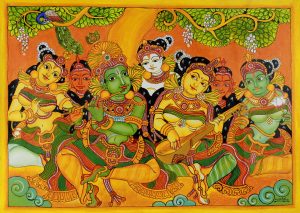
Although Pathanamthitta is the youngest among the districts of Kerala, the are comes under the district has a rich tradition of art and culture. The rich art includes the famous folk called Padayani. Vasthuvidya Gurukulam, constituted by the State’s Cultural Department is a unique institution functioning for the promotion of Vasthuvidya.
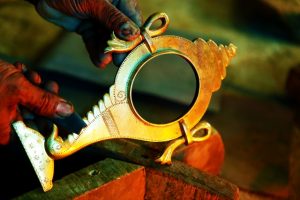
Aranmula Kannadi’ is a unique art which cannot be found else anywhere in the world.The making of the metal mirror is a long process that needs enough patience. Some undisclosed metals are alloyed with copper and tin to cast the Aranmula Kannadi in typical clay moulds.it takes not less than 14 days to make a dozen metal mirrors, and the smallest Aranmula Kannadi of one-and-a-half inches costs about Rs.950.
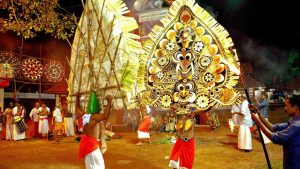
The Kadamanitta Devi Temple is famous for the ten day long Padayani performances held in connection with the annual festival in April/May. Patayani is a ritualistic dance, which literally means an array of common people.The figures in Patayani consists of Pisachu, Kali, Karakkura, Pillatini, Bhairavi, Kalan etc. The masks are painted with a grotesque surrealistic touch.